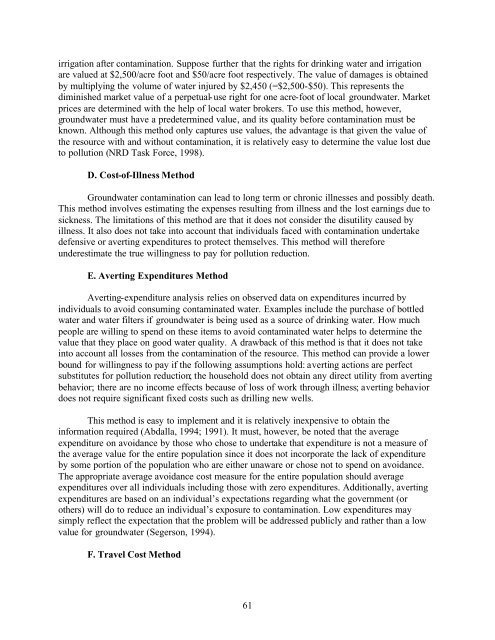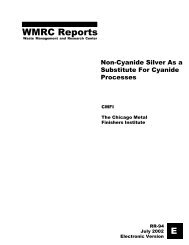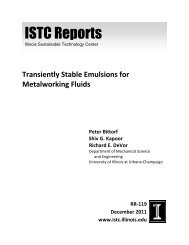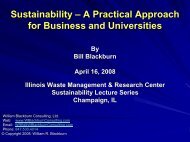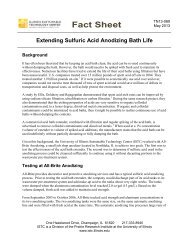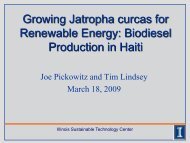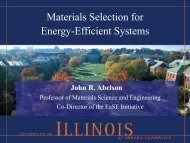Natural Resource Damage Assessment: Methods and Cases
Natural Resource Damage Assessment: Methods and Cases
Natural Resource Damage Assessment: Methods and Cases
You also want an ePaper? Increase the reach of your titles
YUMPU automatically turns print PDFs into web optimized ePapers that Google loves.
irrigation after contamination. Suppose further that the rights for drinking water <strong>and</strong> irrigation<br />
are valued at $2,500/acre foot <strong>and</strong> $50/acre foot respectively. The value of damages is obtained<br />
by multiplying the volume of water injured by $2,450 (=$2,500-$50). This represents the<br />
diminished market value of a perpetual-use right for one acre-foot of local groundwater. Market<br />
prices are determined with the help of local water brokers. To use this method, however,<br />
groundwater must have a predetermined value, <strong>and</strong> its quality before contamination must be<br />
known. Although this method only captures use values, the advantage is that given the value of<br />
the resource with <strong>and</strong> without contamination, it is relatively easy to determine the value lost due<br />
to pollution (NRD Task Force, 1998).<br />
D. Cost-of-Illness Method<br />
Groundwater contamination can lead to long term or chronic illnesses <strong>and</strong> possibly death.<br />
This method involves estimating the expenses resulting from illness <strong>and</strong> the lost earnings due to<br />
sickness. The limitations of this method are that it does not consider the disutility caused by<br />
illness. It also does not take into account that individuals faced with contamination undertake<br />
defensive or averting expenditures to protect themselves. This method will therefore<br />
underestimate the true willingness to pay for pollution reduction.<br />
E. Averting Expenditures Method<br />
Averting-expenditure analysis relies on observed data on expenditures incurred by<br />
individuals to avoid consuming contaminated water. Examples include the purchase of bottled<br />
water <strong>and</strong> water filters if groundwater is being used as a source of drinking water. How much<br />
people are willing to spend on these items to avoid contaminated water helps to determine the<br />
value that they place on good water quality. A drawback of this method is that it does not take<br />
into account all losses from the contamination of the resource. This method can provide a lower<br />
bound for willingness to pay if the following assumptions hold: averting actions are perfect<br />
substitutes for pollution reduction; the household does not obtain any direct utility from averting<br />
behavior; there are no income effects because of loss of work through illness; averting behavior<br />
does not require significant fixed costs such as drilling new wells.<br />
This method is easy to implement <strong>and</strong> it is relatively inexpensive to obtain the<br />
information required (Abdalla, 1994; 1991). It must, however, be noted that the average<br />
expenditure on avoidance by those who chose to undertake that expenditure is not a measure of<br />
the average value for the entire population since it does not incorporate the lack of expenditure<br />
by some portion of the population who are either unaware or chose not to spend on avoidance.<br />
The appropriate average avoidance cost measure for the entire population should average<br />
expenditures over all individuals including those with zero expenditures. Additionally, averting<br />
expenditures are based on an individual’s expectations regarding what the government (or<br />
others) will do to reduce an individual’s exposure to contamination. Low expenditures may<br />
simply reflect the expectation that the problem will be addressed publicly <strong>and</strong> rather than a low<br />
value for groundwater (Segerson, 1994).<br />
F. Travel Cost Method<br />
61


